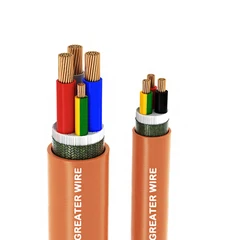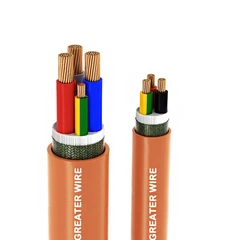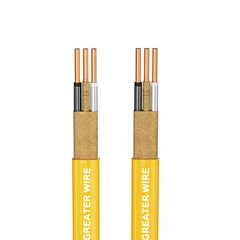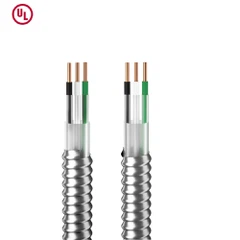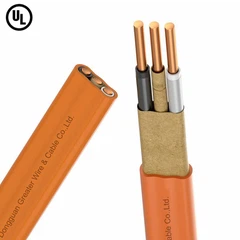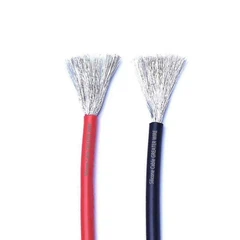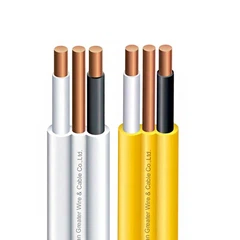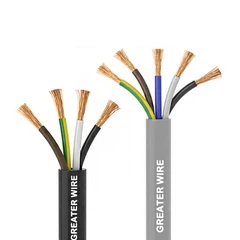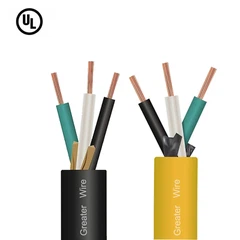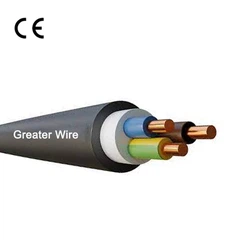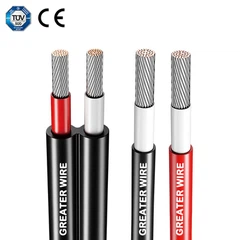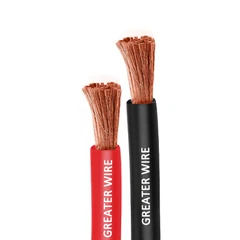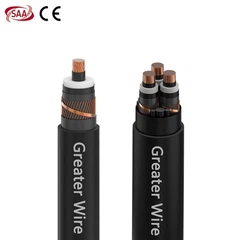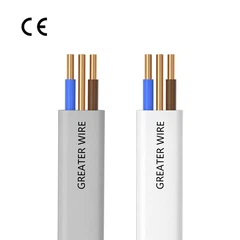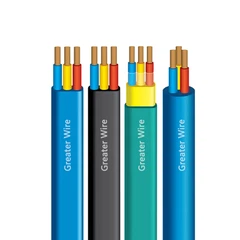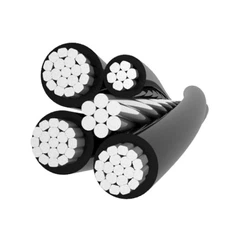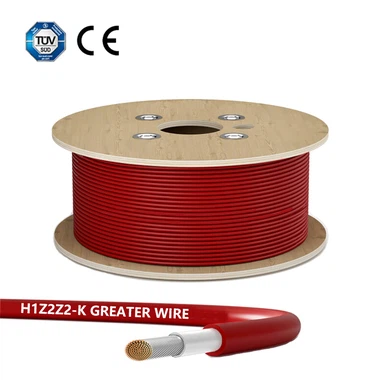Solar power is one of the most popular renewable energy sources globally, offering a sustainable way to generate electricity for homes, businesses, and even large industrial applications. The efficiency of a solar power system depends on various factors, including the quality of the components and the installation. Among these components, the solar cable and solar wire are essential in ensuring the proper transmission of the electrical energy generated by the solar panels to the inverter, battery storage, or grid.
One of the most critical decisions when setting up a solar power system is choosing the right solar cable to handle the current generated. This brings us to a common question: What size solar cable do I need for 40 amps?
In this article, we will explore the different types of solar cables and solar wires, the factors that influence the selection of the correct cable size, and how to determine the proper wire size for a 40-amp load.
Understanding Solar Cables and Solar Wire
Before diving into cable sizing, it's important to understand the role of solar cables and solar wires in a solar system.
Solar Cable: A solar cable is a type of electrical cable designed specifically for use in solar energy systems. Solar cables are typically made with copper or aluminum conductors and are insulated with durable materials such as cross-linked polyethylene (XLPE) or ethylene tetrafluoroethylene (ETFE) to withstand outdoor conditions, including UV radiation, extreme temperatures, and moisture. The primary role of a solar cable is to transmit the electricity generated by solar panels to other system components, such as inverters or batteries.
Solar Wire: Solar wire refers to the conductors inside the cable that carry electrical current. The wire can be made of copper, which is highly conductive, or aluminum, which is less conductive but often used in larger cable sizes due to its lower cost. The size of the wire - or its gauge - determines how much electrical current it can safely carry. For example, a larger wire (with a bigger cross-sectional area) can carry more current and is used for larger, more powerful solar installations.
Why is Cable Size Important?
When designing a solar power system, choosing the right solar cable size is critical for a few reasons:
Current Carrying Capacity (Ampacity): Each type of cable and wire has a specified current-carrying capacity, often called ampacity. Choosing a cable that can handle more current than your system will generate ensures that the system operates efficiently without overheating. For example, if your system produces 40 amps of current, you need a cable that can safely handle at least 40 amps.
Voltage Drop: Voltage drop occurs when electricity travels over a long distance through a wire. The longer the distance, the more the voltage decreases, leading to power loss and inefficiency. The size of the wire impacts voltage drop; larger cables experience less voltage drop.
Safety: Choosing the correct cable size ensures that your system is safe. Using a cable that's too small for the current can cause the cable to overheat, which can potentially result in fires or electrical failure.
Longevity of the System: A well-sized cable minimizes wear and tear, reduces overheating, and helps the system last longer without degradation.
Determining the Correct Cable Size for 40 Amps
To choose the right solar cable size for 40 amps, several factors need to be considered, including the material of the cable, the insulation type, the length of the cable, the ambient temperature, and the system voltage.
1. Conductor Material: Copper vs. Aluminum
The most commonly used materials for solar wire conductors are copper and aluminum. Both have their advantages and disadvantages.
Copper: Copper conductors have superior conductivity compared to aluminum, meaning they carry more current for the same size wire. Copper cables are more efficient and have lower resistance, which translates to less energy loss over the distance. Copper cables are typically used in smaller solar systems and are more expensive than aluminum cables.
Aluminum: Aluminum conductors are less efficient than copper, but they are cheaper and lighter. For the same current-carrying capacity, an aluminum wire needs to be larger (have a greater cross-sectional area) than copper. Aluminum cables are often used in large solar systems or for long cable runs, as they offer a good balance between cost and performance.
For a 40-amp load, copper is typically the preferred material due to its better conductivity and efficiency. However, aluminum cables can be used for larger cable sizes to reduce cost, though the wire size will need to be increased.
2. Cable Insulation and Temperature Rating
The insulation material around the wire affects the cable's current-carrying capacity and its ability to withstand environmental conditions. Common insulation materials for solar cables include:
Cross-linked Polyethylene (XLPE): XLPE is widely used for solar cables due to its excellent temperature resistance, often rated for use in temperatures up to 90°C.
Ethylene Tetrafluoroethylene (ETFE): ETFE is another common insulation material used in solar cables, offering excellent resistance to UV radiation and high temperatures. ETFE cables are highly durable and suitable for outdoor applications.
The insulation material's temperature rating determines how much current the cable can safely carry. If the ambient temperature around the cable is high (e.g., 40°C or higher), the ampacity of the cable decreases. In such cases, you might need to use a cable with thicker insulation or increase the wire size to compensate for the heat.
3. System Voltage
The voltage rating of the solar system will also affect the required cable size. Low voltage systems (e.g., 12V, 24V) require thicker cables for the same current, while high voltage systems (e.g., 600V or 1000V) allow you to use smaller cables for the same current due to lower current requirements.
In general, solar cables for high-voltage systems tend to be smaller in diameter because the current drawn by the system is lower, while low-voltage systems require larger cables to handle the higher current.
4. Length of Cable Run
Longer cable runs result in higher resistance and voltage drop, which can lead to inefficiency and power loss. To minimize this, you need to use a larger solar cable. The longer the distance from the solar panel array to the inverter or battery storage, the thicker the wire should be to reduce voltage drop and ensure that the system works optimally.
If the distance is relatively short (e.g., under 10 meters), a 4mm² or 6mm² copper cable might suffice for a 40A load. However, for longer distances (more than 10 meters), a thicker cable such as 10mm² or 16mm² may be needed to reduce the effects of voltage drop.
5. Voltage Drop Calculation
To ensure the system operates efficiently, you must account for voltage drop. A general rule of thumb is to keep the voltage drop below 3% for residential systems. To calculate the appropriate cable size, you need to consider the length of the cable and the current. Here's a simple guide:
For copper cables: A 6mm² copper solar cable can handle 40 amps over distances of up to 10 meters with minimal voltage drop. For longer distances, you may need to use a 10mm² or 16mm² copper cable to prevent excessive voltage drop.
For aluminum cables: Aluminum cables require a larger cross-sectional area to carry the same current. A 10mm² aluminum cable might be needed for a 40A load over a similar distance.
Common Cable Sizes for 40A Load
For a 40-amp load, you typically need a solar cable that can handle the current while minimizing voltage drop. Below are the common cable sizes:
Copper Cable (6mm²): This is the most common size for 40A loads in short to medium cable runs (up to 10 meters). Copper cables are highly efficient and have a low resistance, making them suitable for residential systems.
Copper Cable (10mm²): For longer cable runs (more than 10 meters) or if the system is running at higher voltages, a 10mm² copper solar cable might be required. This ensures that the current can travel efficiently without excessive voltage drop.
Aluminum Cable (10mm² to 16mm²): Aluminum cables are used for larger systems or longer distances due to their lower cost, but they require larger diameters to handle the same current as copper. For a 40A load, an aluminum cable of 10mm² to 16mm² is typically sufficient.

